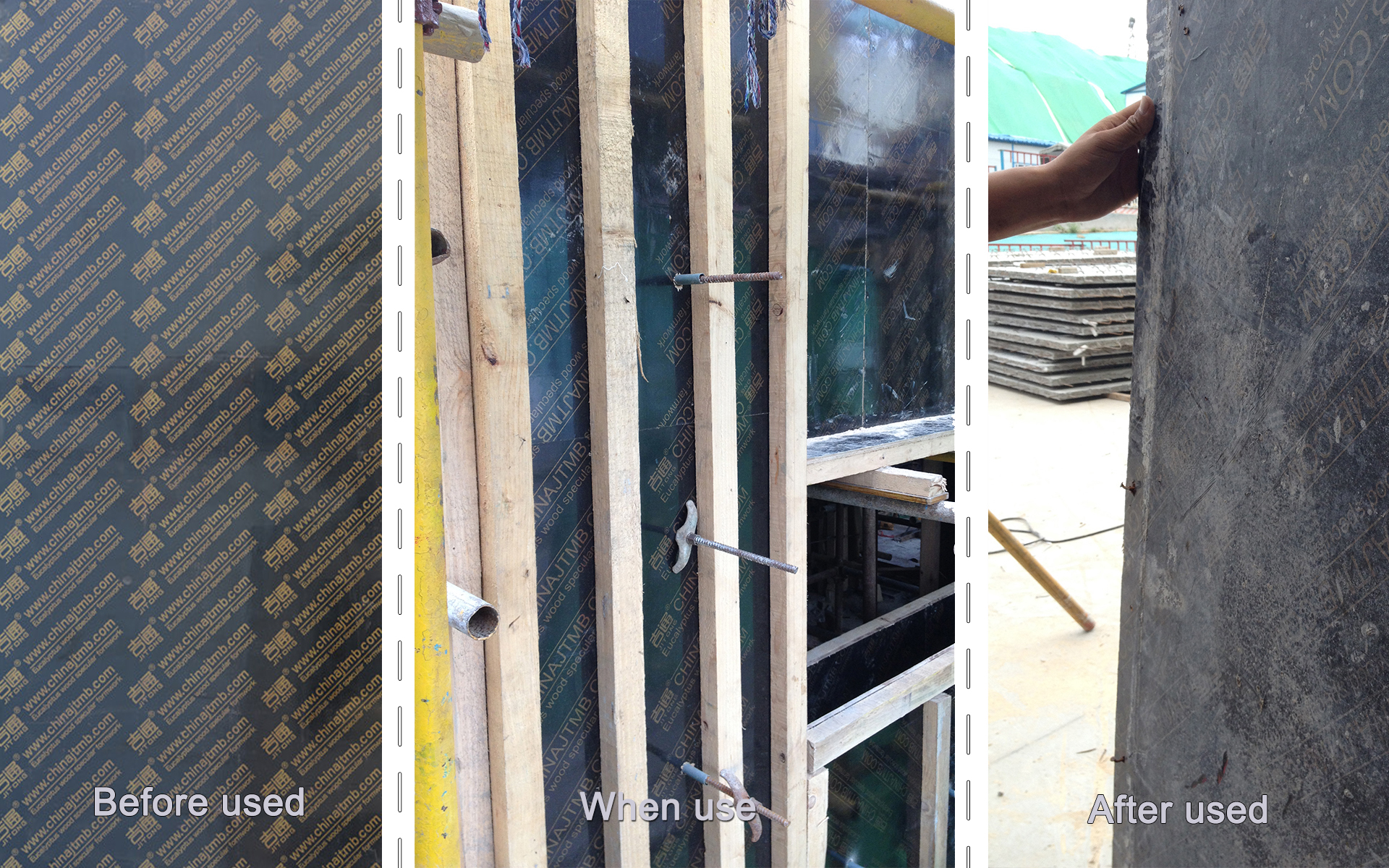Storage on site
The panels are usually delivered to site in a dry condition and they should be protected from direct exposure to the elements, either by storing in a building or by covering with a secure waterproof tarpaulin. The panels must be stored on level ground, well clear of mud or standing water (puddles) and away from any risk of contact with vehicles or machinery. If the panels are to be stored on site for more than a few days, the outer packing and strapping should be removed.
Caution
Once the strapping has been removed, the boards should not be moved further on site using mechanical handling equipment, as overlaid panels are extremely slippery.
Concrete finish
The quality of the concrete finish and the number of reuses of shuttering plywoods are affected by certain key points in terms of site practice. The panels are likely to be delivered to site in a relatively dry condition (moisture content less than 15%). When first exposed to the prevailing weather conditions and during the early uses of the boards, there is likely to be some localised swelling of the wood veneer caused by moisture pickup, which may leave impressions in the face of the concrete. This is especially common with phenol film overlaid surfaces. Where the smoothest possible concrete finish is required from first use,it is recommended to use either JTF-Form Green or JTF-Form AZYP . The coating of JTF-Form Green is a polymer based material which contains polypropylene(PP). When using JTF-Form AZYP, the light brown MDO side should be selected as the face of the form. If a shiny finish to the surface of the concrete is required, a phenolic film overlaid boards should be used. With phenolic film overlaid board, it is recommended the forms are ‘conditioned’ - for example by applying wet cement slurry or grout wash, prior to first use in situ. This should make any localised swelling during the first few uses less noticeable.
Form preparation
Close attention to the following points will ensure that any initial localised swelling of
the plywood, and consequent impressions in the concrete, are minimised. Cutting of the
plywood should be carried out using a fine toothed saw to minimise break out of the wood veneer or film on the back of the panel. Likewise, tie-bolt holes should be piloted and then drilled from both sides, not drilled right through from one side only. All cut edges and tiebolt holes should be painted with at least 2 coats of water resistant paint. Apply a suitable filling compound or mastic to joints between panels to minimise grout loss. For best results the plywood should be fastened to the form from the back of the panel. However if this is not possible, either countersunk screws or nails punched below the surface should be used. Care must be taken to fill the resulting holes in the panel surface with a suitable filler. If possible, further protection should be given by applying 2 coats of water resistant paint over the top of the filler.
Form release agents
The selection of the most suitable type of form release agent, in accordance with the type of overlay (e.g. PP, PSF or MDO), will ensure cleaner striking of the forms and more reuses. The quality of the release agent may also affect the quality and appearance of the concrete finish. The plywood panels must be oiled before each and every use and in conjunction with a good quality release agent.
Treatment before first use
It is essential that the plywood panels are thoroughly treated with the appropriate release agent before the first use, irrespective of the surface coating. JTF-Form Green should be oiled very slightly with neat oils with surfactant. JTF-Form AZYP should be oiled twice with a chemically active release agent before first use, and thereafter once before each subsequent pour.
Storage of forms
Forms should be cleaned and re-oiled immediately after they have been struck. Forms not cleaned immediately after use are likely to be damaged when removing fully cured concrete from the face. Forms should be stored with the face away from the sun, for example leaning against a wall. Exposure of the plywood face to the sun can lead to rapid loss of moisture from the face veneer, and damage to the overlay.
Repairs to the face
Depending on the nature of the damage, minor repairs can generally be carried out using a two component epoxy filler. However it should be noted that, due to the difference in permeability between the face of the plywood and the filler, such repairs may be noticeable in the concrete finish, no matter how carefully they are carried out. For larger repairs wooden inserts are available.
This site guidance note is intended for information purposes only and only relates to JITONG formwork plywoods manufactured by JITONG.








